Proactive hiring practices to beat the competition in a hard-to-hire world
The pressure is on for Talent Acquisition teams to recruit at scale and get it right. Yet in a hard-to-hire world, this is increasingly difficult. However, by doing ‘uncomfortable’ things, and thinking about how to use digital solutions, data, outbound pipeline building and personalization, there is a way forward. To find out more, read about what was discussed in our recent exclusive roundtable discussion.
Why You Should Care
Today’s hard-to-hire market means Talent Acquisition (TA) and recruitment functions must consider using different talent sourcing techniques – even if it makes them uncomfortable.
Outbound recruitment, digital solutions, data-sharing, thinking about efficiency, and increased personalization – it all has to be on the table.
As one attendee noted: ‘I have never experienced anything like this [war for talent] ever where there are so many vacancies and it's so challenging to find the right people.’
Personalization, personalization, personalization
Many in TA are feeling the acute pressure of new demands to hire as well as a new hiring market – both, largely, shaped by the effects of the pandemic. Many companies are wanting to up their recruitment efforts in order to turbo-charge 2022 growth, after business plans were put on hold due to the impact of Covid-19. Other organizations are, simply put, struggling to get hold of the talent they need; what traditional pipelines and TA activity used to deliver. The result of a dramatically reshaped talent landscape.
In this pressurized hiring landscape, organizations might start to think about going outbound, rather than waiting for candidates to come to them. Yet, as one talent professional at the roundtable noted, this can’t be done in a roughshod, impersonal manner. TA professionals, as that point of contact for the potential candidate, must make efforts to stand out as an empathetic, candidate-focussed employer-of-choice, who thinks deeply about what an individual might want from their experience of work, in order to deliver the talent their organization needs.
But those in TA know that the candidate-focussed approach is difficult, and this was reflected in the roundtable discussion, especially when hiring at speed or volume and having to balance the talent needs of the hiring organization with individual demands. It’s something that one TA leader at the discussion said is made even more difficult in a world that is increasingly virtual and remote, where reaching out to potential candidates, especially if this is outbound, is done via digital means. Most at the roundtable resonated with this.
Part of the roundtable discussion also focussed on where appropriate technology might help balance the need to personalize interactions with the need to create talent pipelines full of appropriate potential candidates i.e. ensuring scale and individualization worked in harmony. If personalization could be done en-masse, via the right software partner, it could both create efficiency and individualize the process for candidates.
For some in the discussion, this would be an ideal scenario but there are many barriers to this outcome. Despite louder conversations around data and analytics and goal-setting, some organizations still struggle with this in TA. Others worried that they don’t have the right culture for this or that their recruiters aren’t able to meet the needs of those who increasingly demand individualized experiences.
Furthermore, with some industries, such as technology and IT, having such a huge demand rate for candidates, it’s hard for companies to stand out when so many others are also vying for attention. Even if the hiring company is being savvy with how they use technology to personalize. Another worry brought up in the discussion was outsourcing: if TA doesn’t sit in-house, it can be hard to shape candidate conversations and make them authentic.
Organizational brand, recruiter brand, and the role of data
Yet, the discussion posited a fix to these barriers to good recruitment practices: brand. Even if it’s hard to hire, even if individual candidates demand different types of interaction and care, even if parts of recruitment are outsourced, one attendee believed that by focussing on brand-building companies can stand out. This can be done via profile-raising of individuals at the firm and content creation, in order to create space for good brand interactions.
Of course, what that brand should underpin is inclusivity and belonging, noted one attendee, so any individual feels that they would be able to flourish and self-actualize at that firm. From there, the discussion then evolved into analyzing how important the relationship the recruiter builds with potential candidates is. Implicit in this was a thread about emotional intelligence: the recruiter will need to be able to change their approach depending on how that individual prefers to interact and not just use one method.
The individual recruiter, too, will need to build a good brand; something that a significant number do not do. One TA leader said this needs to focus on profile-building, community-building and network-building as this will be the key to ensuring they have an active set of candidates they already have a good relationship with. As part of this, one leader said recruiters need to show potential candidates they have done research about them and they shouldn’t try and hide their intent to potentially engage them in a hiring process. Transparency and honesty, as many in HR and TA already know, are center stage here.
And with recruiters spending time with so many different candidates, using different types of interaction, the group largely agreed that being able to track what worked and what didn’t work would be crucial to ensuring efficiency and long-term success, showcasing where barriers might exist, such as in the hiring experience or with the hiring manager.
At this point in the discussion, suggestions included tracking interactions in order to tweak and personalize them in ways that would drive more positive outcomes. Here, one recruitment leader at the roundtable believed that this data should be shared with the wider HR function, and vice versa, in order to showcase where barriers in hiring might exist and help TA get a bigger voice in strategic discussions – as well as with the C-Suite who increasingly demand this data-centric worldview. As one leader said: “The data is the most important element in order to drive key strategic decisions.”
And it could, as some attendees suggested, showcase to business leaders that HR and TA are a commercial function that can drive savings, as well as deliver the much-needed talent the business needs.
Why join an UNLEASH roundtable?
Amid the current disruption, HR leaders need to get ahead of the exponential trend where work, technology, and how work gets done have changed forever. But how should we approach the relevant questions, given the radical uncertainty we continue to face as the pandemic becomes more protracted than anyone imagined? Our exclusive Virtual Roundtables are designed to explore where business leaders are focused now, key challenges and prioritization for the rest of the year, and what matters most in planning for what’s next.
Sign up to the UNLEASH Newsletter
Get the Editor’s picks of the week delivered straight to your inbox!

Multiple award-winning journalist, editor and content strategist
Dan is an award-winning HR journalist and editor with over five years experience in the HR space.

